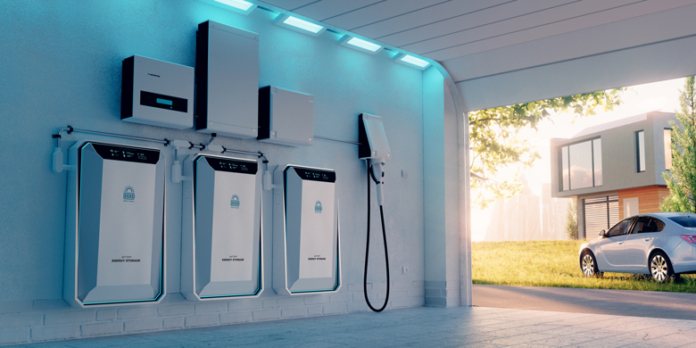
Don Dulchinos, Director at the OpenADR Alliance
Grid-interactive buildings utilise smart technologies and connected systems to optimise energy use and interact with the electricity grid. This new generation of smart buildings is transforming energy management, helping to deliver much greater energy flexibility. Used increasingly in energy flexibility programmes, they offer efficiency for users, and cost savings.
Importantly, they can actively contribute to balancing the supply and demand of energy, reducing strain on the grid.
These ‘intelligent’ buildings – mostly commercial but residential as well – can adapt energy use dynamically. Instead of playing a passive role in simply drawing down energy, they reduce demand when the grid is under stress, particularly during peak use.
The growing importance of distributed energy sources
By storing and drawing power from different distributed energy resources (DER) buildings like this treat electric appliances and systems as potential grid resources.
When we talk about DER, this might include heat pumps, water heaters and other heating, ventilation and air-conditioning (HVAC) systems and appliances or more often today, renewable energy sources like solar PVs, battery storage, or electric vehicles. In commercial buildings, Building Energy Management Systems or BEMS can aggregate these DERs.
Smart buildings and connected homes and technologies are not new of course. We’ve seen talk of development around this for a while. But recent advances in grid connectivity and standards, and more recently, the integration of AI for smart automation, have accelerated these developments.
What we are now seeing are more use cases where grid-interactive buildings are enabling the localisation, generation and consumption of energy, while working around the bottlenecks in the distribution network.
The role of industry standards
As an industry alliance that represents both manufacturers and users of HVACR products, and increasingly BEMS, the OpenADR Alliance is witnessing innovation in action. The adoption of these new technologies is driving this progress with the potential to unlock other benefits.
Standards play a crucial role in driving this innovation, particularly in enabling efficient demand response within energy management systems, while governments and regulatory bodies support this by mandating these standards.
In the US, the CTA-2045 specification (also known as the certified version EcoPort) enables smart appliances and devices to connect directly to energy management systems (commercial or residential) through a universal port. This interoperability promotes flexibility and adaptive energy consumption across appliances, playing a crucial role in encouraging customers to adopt greener practices.
Any EcoPort-certified control module, when plugged into an appliance or building energy management system, can reliably establish communications that meet the requirements of the CTA-2045 standard.
The UK has followed suit, with two standards published in 2021 – PAS 1878 and PAS 1879 – setting out the requirements for energy smart appliances (ESA). The Department for Energy Security and Net Zero (DESNZ) led the development of PAS 1878, incorporating OpenADR as one of the criteria that an electrical appliance must meet to perform and be classified as an ESA. PAS 1879, on the other hand, addresses the demand side response operation of these appliances.
DESNZ has emphasised the significance of innovation in smart technologies in their ambitions to reach net zero by 2050 – and the role standards will play in driving this transformation.
The government’s Flexibility Innovation Program is also contributing to this effort by supporting innovative solutions, including the development of ESA for the delivery of interoperable demand side response as part of its program.
Early implementations
Particularly in the US, these are largely restricted to water heaters, a major source of load response across households. EcoPort provides a standard interface for energy management signals and messages, enabling communication with various devices, such as building energy management hubs, residential gateways, sensors, and more unlikely candidates like pool pumps and EV chargers.
A real-world example is in Oregon, where utilities have implemented OpenADR programs using certified, CTA-2045 equipped devices. Local utilities have focused on compliant smart water heaters and HVAC, which temporarily reduced energy consumption during periods of high demand. This has resulted in a significant reduction in peak demand during hot summer days, taking the pressure off the grid and ensuring customers maintained a comfortable environment.
The success of these sorts of programs demonstrates the huge potential for similar initiatives. By using technology and fostering greater collaboration between governments, energy providers, product manufacturers, and customers, there’s an opportunity to create a positive energy future.
With the growing range of products and systems now available, grid-interactive buildings are on course to become a major contributor to this.
This article appeared in the Nov/Dec 2025 issue of Energy Manager magazine. Subscribe here.






